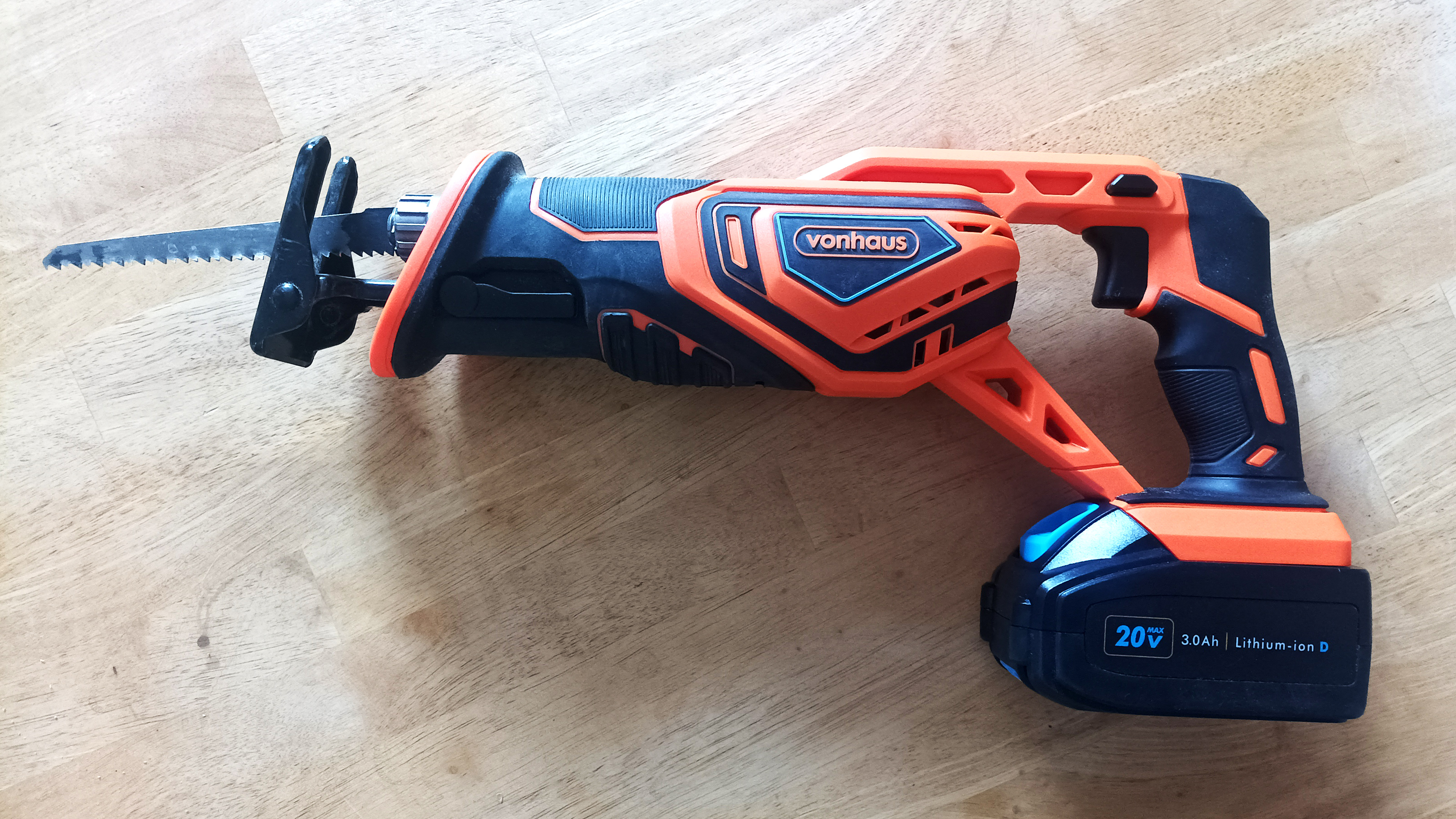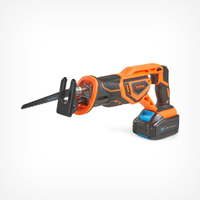Homebuilding Verdict
The cordless VonHaus D-Series 20V MAX Reciprocating Saw is a solid straightforward tool that is perfect for DIYers and occasional home renovators. It is light, well balanced and ideal for cutting through timber, metal, plastic and garden trees. It has decent battery life of around half an hour per full charge. But you can’t get a replacement battery.
Pros
- +
Competitively priced
- +
Light and well balanced
- +
Cordless
Cons
- -
No replacement batteries available
- -
Supplied blades didn’t last long
You can trust Homebuilding & Renovating.
Is the VonHaus D-Series 20V MAX Reciprocating Saw the ideal companion when it's time to do some remodeling on your latest DIY or renovation project? It's a multi purpose power tool that likes to get stuck in and power its way through wood, nails, plastic and plasterboard.
There’s no cord to restrict where you can take the saw. You can keep it by your side wherever you need to take it. Simply remember to use the included charger to get the battery back to full power.
Check out how I put the competitively priced VonHaus through its paces to see whether or not it would make our best reciprocating saw list.
VonHaus D-Series 20V MAX Reciprocating Saw Deal
VonHaus D-Series 20V MAX Reciprocating Saw WAS £79.99 NOW £69.99
Start cutting timber, plastic, sheet steel, thin pipe, aluminium, brass and copper with this variable speed saw. Includes battery, charger and two blades.
First impressions of the VonHaus D-Series 20V MAX Reciprocating Saw
Name: VonHaus D-Series 20V MAX Reciprocating Saw
SKU: 3500009
Type: Cordless
Motor: 2800RPM
Blade length: 150mm
Cutting diameter: 22mm
Dimensions: 41 x 8 x 19.5cm (LWH)
Weight: 2.44kg
The VonHaus reciprocating saw’s packaging is definitely no-nonsense. Does this reflect what you are getting or does it mean that VonHaus has concentrated on the product rather than the marketing? Time will tell.
The saw comes in a recyclable cardboard box, and that’s it apart from the warning label not to use a knife or scissors to cut through the box's tape. VonHaus keeps everything down to a minimum, which I like. The less waste the better in my opinion.
When I opened the box I was pleasantly surprised to find a smart, neat, compact, black, soft carry case with the VonHaus logo neatly sitting in the middle. A couple of carry handles felt strong and sturdy and more than capable of transporting the saw wherever you want to go.
So what’s in the soft case? There’s the obvious – the VonHaus D-Series 20V MAX Reciprocating Saw – which is accompanied by a 3.0Ah battery and battery charger to power the cordless saw. To complete the set there are a couple of general purpose 150mm HSS blades.
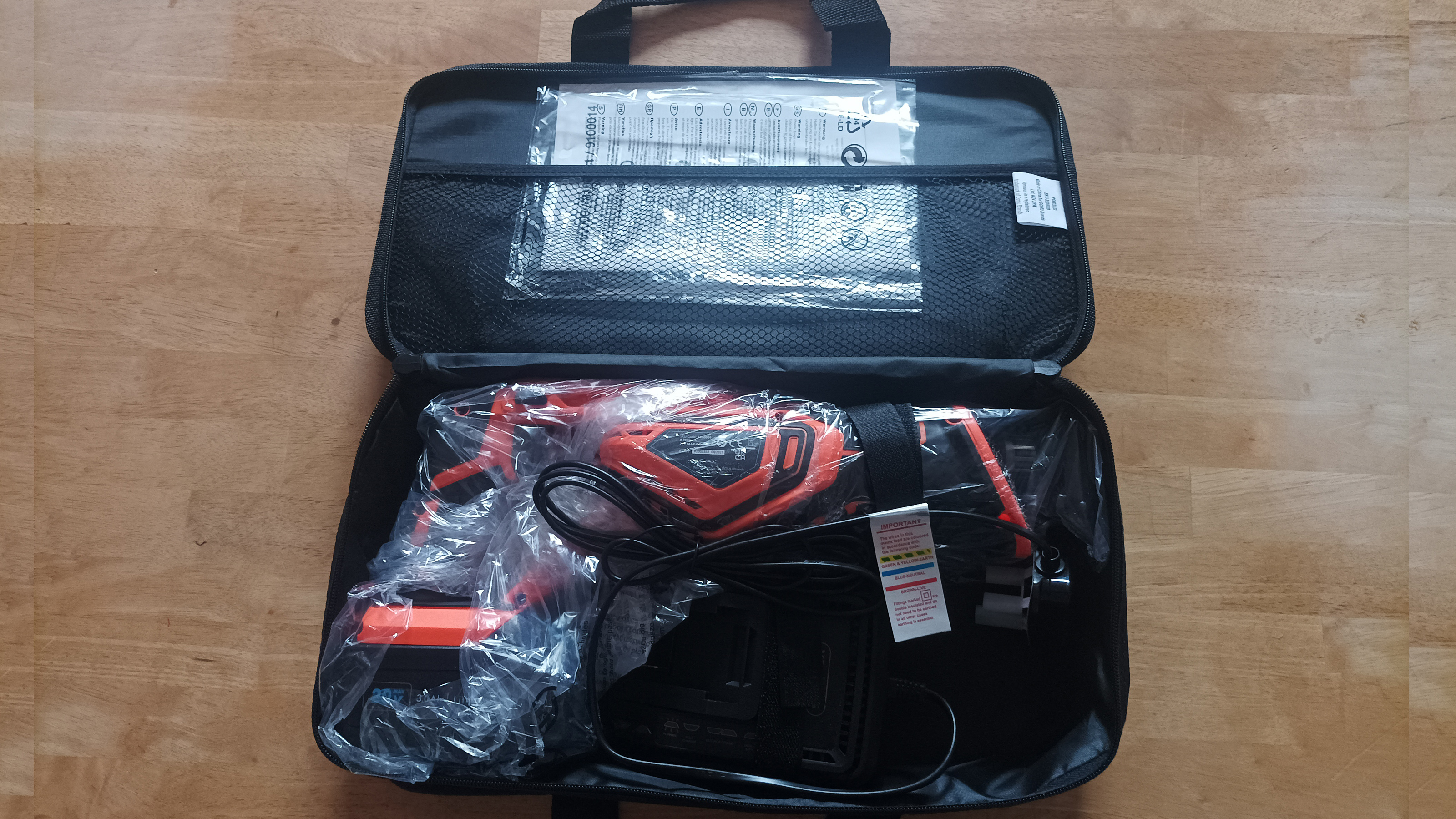
How well built is the VonHaus D-Series 20V MAX Reciprocating Saw?
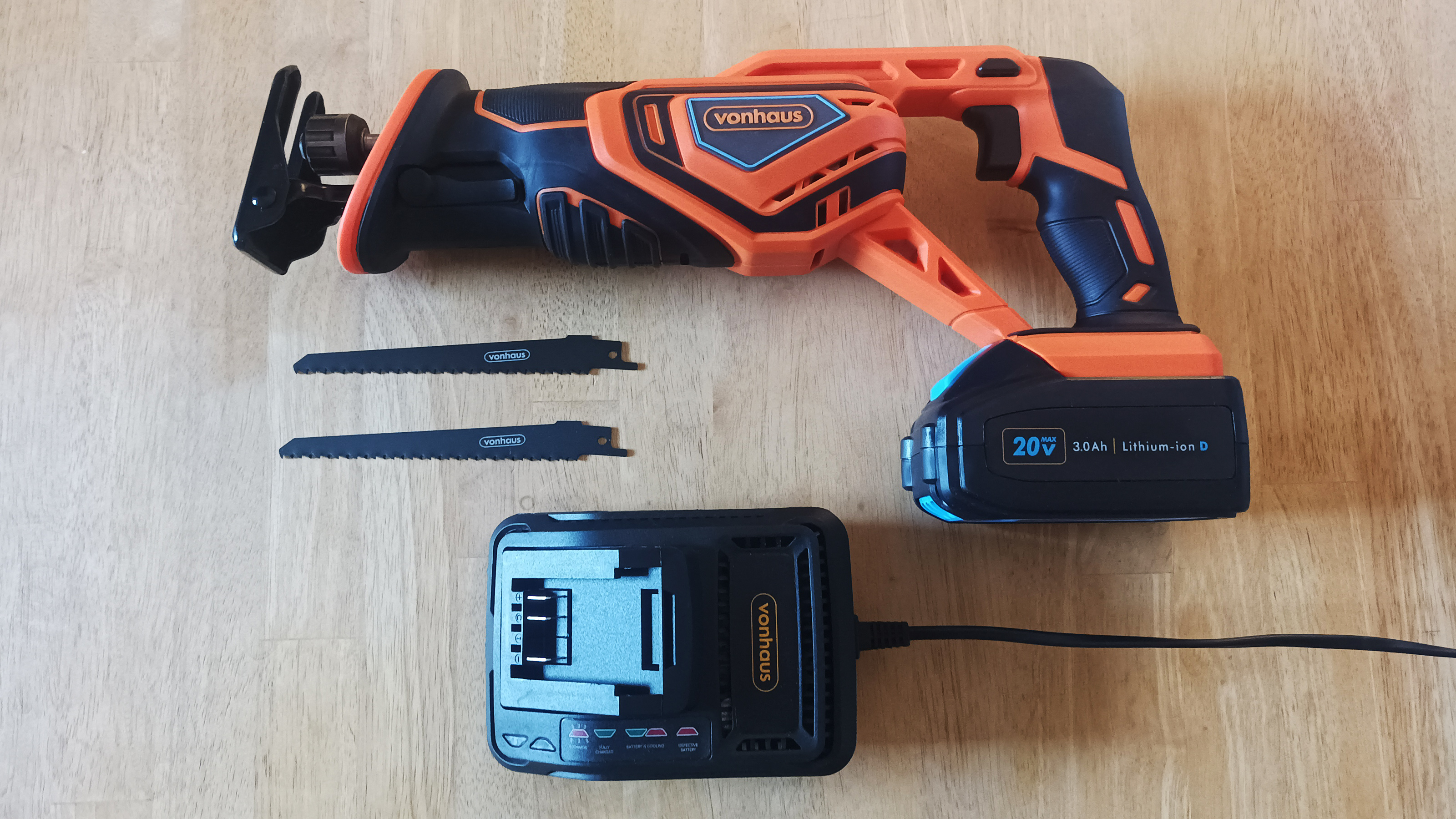
VonHaus D-Series 20V MAX Reciprocating Saw
Carry bag
3.0Ah 20V MAX Lithium-ion battery
Battery charger
2 x 150mm HSS blade
Instruction manual
The saw itself feels solid and weighs in at just under 2.5kg with the battery attached meaning that it is heading towards the lighter end of the scale for reciprocating saws. The lightweight nature of the VonHaus means you can use it for longer without feeling the effects on your arms. The rubberised grip on the handle and the body –top and bottom – both have just the right level of grip and feel like they are going to last. With both hands on the saw the balance felt good.
The motor offers up to 2800 RPM which is more than capable of tackling most renovation tasks. It is a little underpowered compared with some reciprocating saws – which have 3000 RPM motors – but the difference is nominal and the motor is still very capable, especially if you're a weekend renovator rather than a professional.
What features does the VonHaus D-Series 20V MAX Reciprocating Saw have?
Reciprocating saws don’t typically come with a lot of extra features and the Von Haus is no different. There’s an adjustable pivot shoe to help stabilise the saw and reduce vibration. In its default position it felt secure and did its job well. But move it out – there’s six notches on the shoe, so six settings – to the furthest setting and it's not as sturdy as we hoped. It still worked but not quite as well.
The pivot shoe lock lever was adequate rather than outstanding. I felt it could have been better and locked into place more securely, but it is worth noting that we had no problems once in place during testing.
The quick release blade clamp – which allows you to remove and replace the blade without a tool – felt more convincing than the pivot shoe lock lever. A quick twist on the metal clamp and you slip in the blade and the saw is ready to go.
When it comes to safety features there is the very sensible lock button. This stops the saw powering up if the power trigger is accidentally pulled. It's a double lock button meaning you can push it in from the left or right and fire up the saw. It's a simple but essential addition and I struggled to see how you could manage to accidentally hit the lock and power trigger at the same time. Maybe I'm over cautious, but I took the battery out when not in use and all my fingers are still intact.
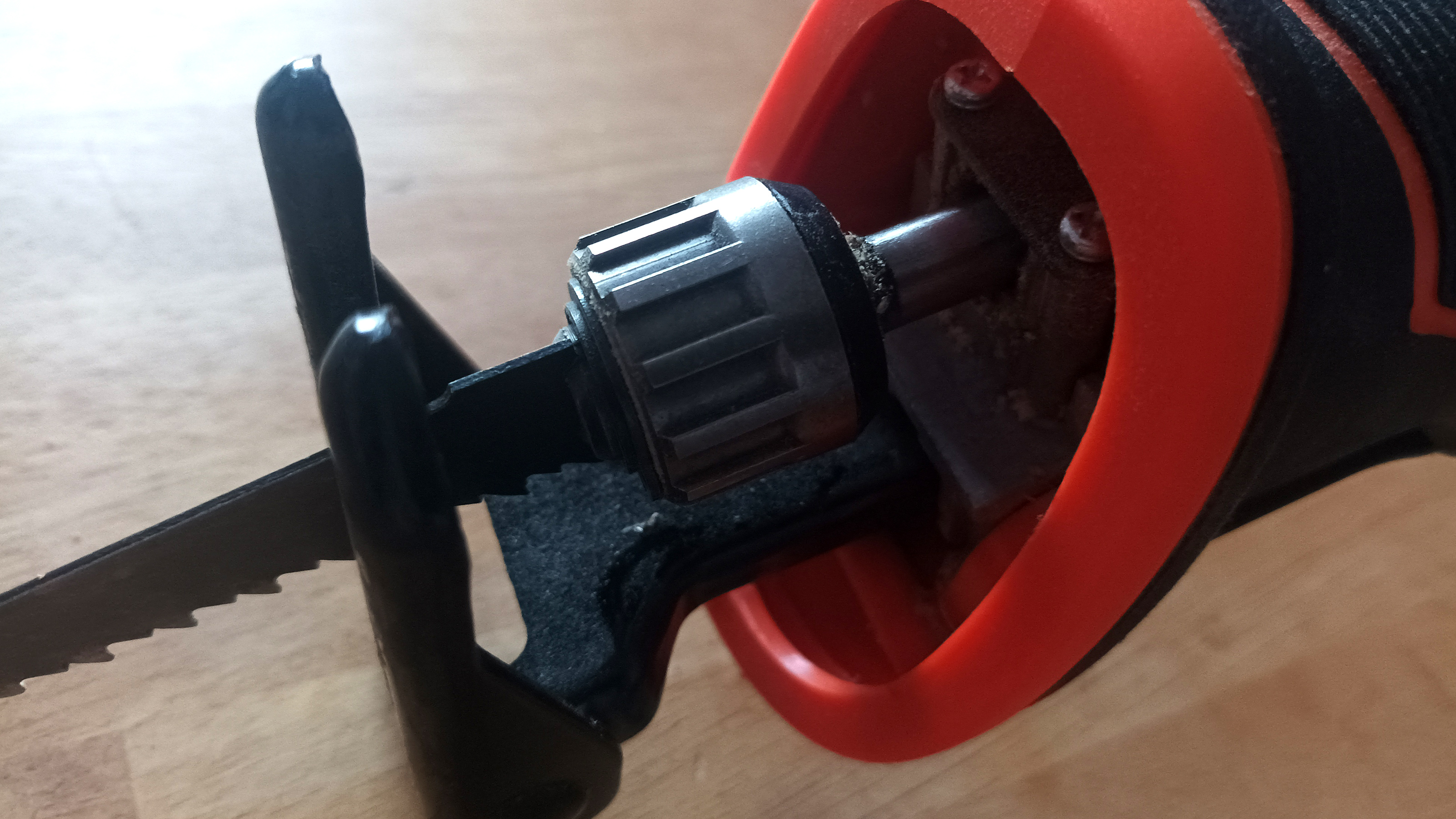
Decent battery and decent battery life, but no replacements batteries
A cordless power tool needs a battery and the VonHaus comes with a 3.0Ah 20V MAX 3.0Ah Lithium-ion battery and its own charger. What does this mean? It means you have a decent size battery. It's worth noting that it's no better than an 18V battery that you commonly get with cordless reciprocating saws. It’s a marketing tool to make it sound better.
The 3.0Ah rating is a decent choice for a power tool rechargeable battery. According to VonHaus battery life is 30 minutes on a full charge and 75 minutes to recharge. This matched up pretty closely with our tests, the battery lasted 25-30 minutes on a full charge, while the charging was a little quicker at 65-70 minutes.
Four handy indicator lights - called into action with a simple button press - give you a quick reference to battery level. One oddity was that the battery indicator was on four bars when in the charger, while the charger was red. This meant I couldn’t work out what the charge level was without taking the battery out of the charger. Not a big deal, but a little confusing.
One downside is that there is only one battery included with the saw. Ideally I like to have two batteries so you can swap out on longer jobs and carry on working uninterrupted. But, perhaps a bigger issue is that you cannot get a replacement battery. If the original packs up, you need to buy the whole package again. Admittedly, the saw may give up before the battery, then it wouldn’t be a problem.
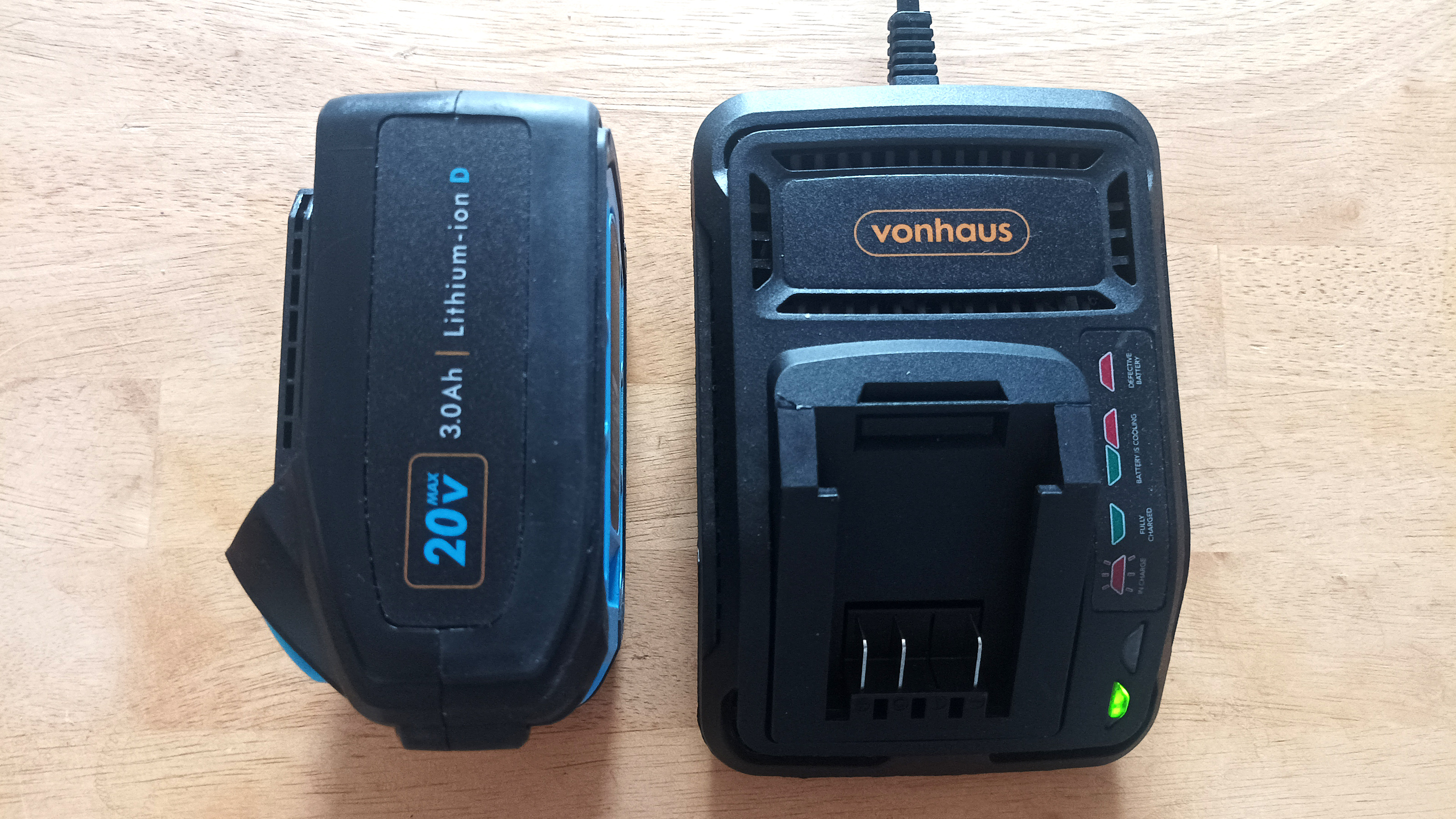
How well did the VonHaus D-Series 20V MAX Reciprocating Saw work?
I tested the saw over a couple of weeks, in 10, 15 and 25 minutes sessions to see how the battery lasted when used in shorter sessions and how long it could go in one session. Using the supplied blades I cut through fence posts, MDF, plastic pipe, metal pipe and a lot of garden bushes and trees.
Initial use of the blade was good, it zipped through all the materials we tested it on, even the metal. However, this took a little longer to get going but once through the initial cutting stage it went through the metal pipe easily.
After an hour the blade was notably blunted - and a little bent, but that was just me and how I was testing the saw. The blade was still cutting through wood, metal and plastic, but taking a little longer to get the job done. But the VonHaus came with two blades, so we switched to the new one to get back the performance.
The vibration was manageable, pretty much like you get with most reciprocating saws, but as the blade wore down the vibration became more noticeable. But a quick break and you can go again.
This is a decent reciprocating saw with decent battery life, we just hope the battery outlasts the saw.
Steve Jenkins is a freelance content creator with over two decades of experience working in digital and print and was previously the DIY content editor for Homebuilding & Renovating.
He is a keen DIYer with over 20 years of experience in transforming and renovating the many homes he has lived in. He specialises in painting and decorating, but has a wide range of skills gleaned from working in the building trade for around 10 years and spending time at night school learning how to plaster and plumb.
He has fitted kitchens, tiled bathrooms and kitchens, laid many floors, built partition walls, plastered walls, plumbed in bathrooms, worked on loft conversions and much more. And when he's not sure how to tackle a DIY project he has a wide network of friends – including plumbers, gas engineers, tilers, carpenters, painters and decorators, electricians and builders – in the trade to call upon.
